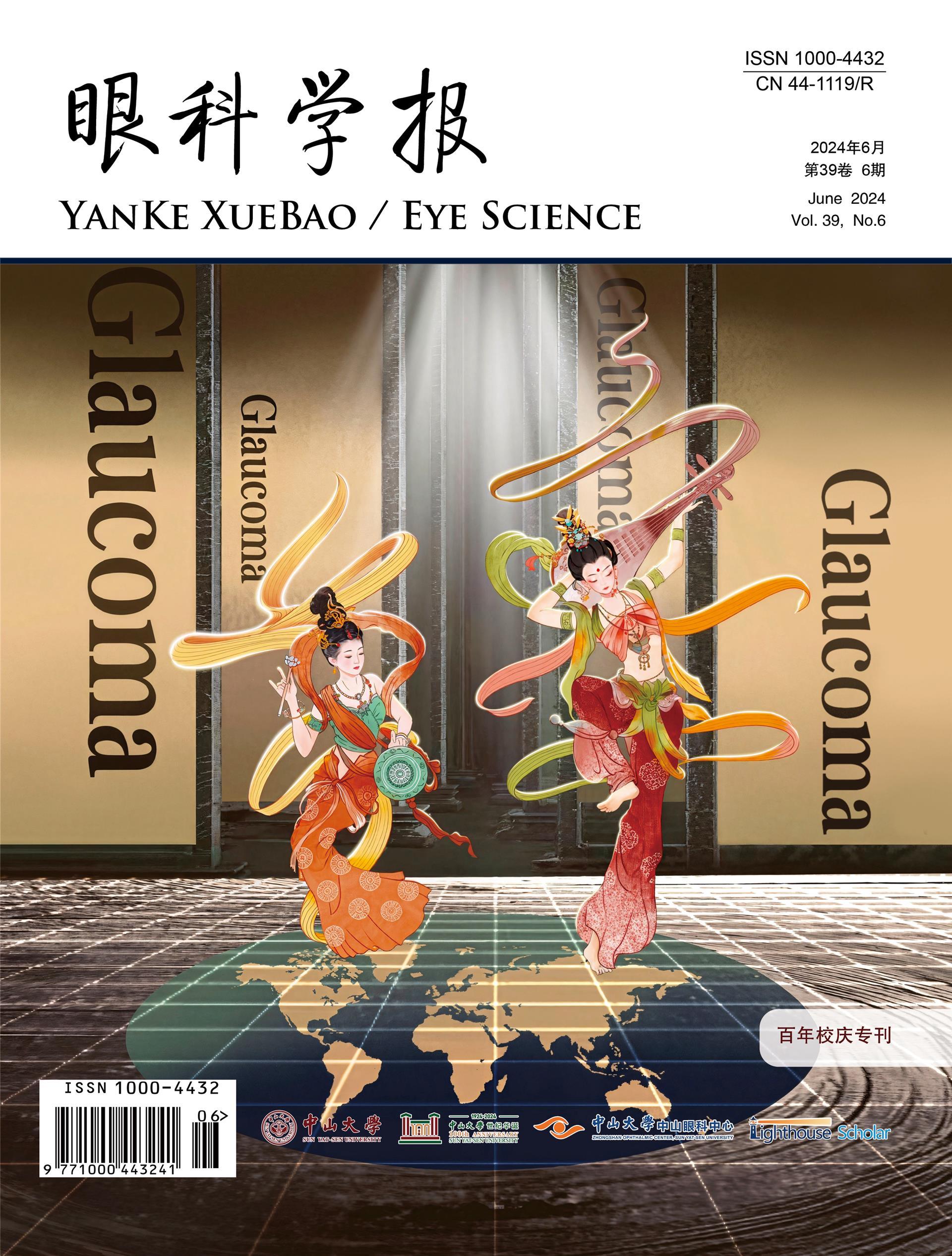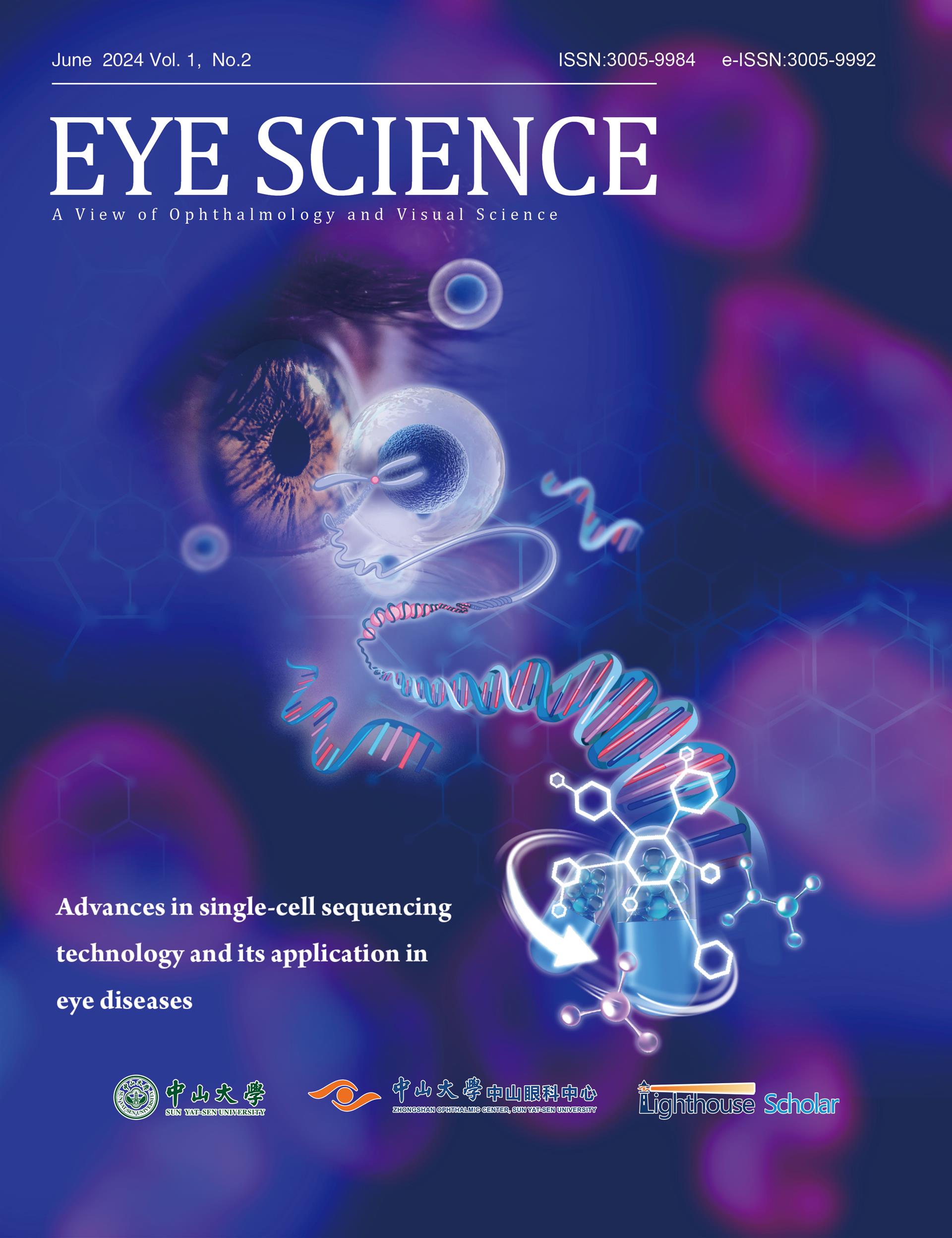1、Nickla DL, Wallman J. The multifunctional choroid. Prog
Retin Eye Res. 2010, 29(2): 144-168. DOI: 10.1016/
j.preteyeres.2009.12.002.Nickla DL, Wallman J. The multifunctional choroid. Prog
Retin Eye Res. 2010, 29(2): 144-168. DOI: 10.1016/
j.preteyeres.2009.12.002.
2、Wallman J, Wildsoet C, Xu A, et al. Moving the retina:
choroidal modulation of refractive state. Vision Res. 1995,
35(1): 37-50. DOI: 10.1016/0042-6989(94)e0049-q.Wallman J, Wildsoet C, Xu A, et al. Moving the retina:
choroidal modulation of refractive state. Vision Res. 1995,
35(1): 37-50. DOI: 10.1016/0042-6989(94)e0049-q.
3、Summers JA. The choroid as a sclera growth regulator.
Exp Eye Res. 2013, 114: 120-127. DOI: 10.1016/
j.exer.2013.03.008.Summers JA. The choroid as a sclera growth regulator.
Exp Eye Res. 2013, 114: 120-127. DOI: 10.1016/
j.exer.2013.03.008.
4、Diether S, Schaeffel F. Local changes in eye growth
induced by imposed local refractive error despite active
accommodation. Vision Res. 1997, 37(6): 659-668. DOI:
10.1016/s0042-6989(96)00224-6.Diether S, Schaeffel F. Local changes in eye growth
induced by imposed local refractive error despite active
accommodation. Vision Res. 1997, 37(6): 659-668. DOI:
10.1016/s0042-6989(96)00224-6.
5、Smith EL 3rd, Hung LF, Huang J, et al. Effects of
optical defocus on refractive development in monkeys:
evidence for local, regionally selective mechanisms.
Invest Ophthalmol Vis Sci. 2010, 51(8): 3864-3873. DOI:
10.1167/iovs.09-4969.Smith EL 3rd, Hung LF, Huang J, et al. Effects of
optical defocus on refractive development in monkeys:
evidence for local, regionally selective mechanisms.
Invest Ophthalmol Vis Sci. 2010, 51(8): 3864-3873. DOI:
10.1167/iovs.09-4969.
6、Troilo D, Gottlieb MD, Wallman J. Visual deprivation
causes myopia in chicks with optic nerve section.
Curr Eye Res. 1987, 6(8): 993-999. DOI: 10.3109/
02713688709034870.Troilo D, Gottlieb MD, Wallman J. Visual deprivation
causes myopia in chicks with optic nerve section.
Curr Eye Res. 1987, 6(8): 993-999. DOI: 10.3109/
02713688709034870.
7、Read SA, Collins MJ, Sander BP. Human optical axial
length and defocus. Invest Ophthalmol Vis Sci. 2010,
51(12): 6262-6269. DOI: 10.1167/iovs.10-5457.Read SA, Collins MJ, Sander BP. Human optical axial
length and defocus. Invest Ophthalmol Vis Sci. 2010,
51(12): 6262-6269. DOI: 10.1167/iovs.10-5457.
8、Hoseini-Yazdi H, Vincent SJ, Collins MJ, et al. Regional
alterations in human choroidal thickness in response
to short-term monocular hemifield myopic defocus.
Ophthalmic Physiol Opt. 2019, 39(3): 172-182. DOI:
10.1111/opo.12609.Hoseini-Yazdi H, Vincent SJ, Collins MJ, et al. Regional
alterations in human choroidal thickness in response
to short-term monocular hemifield myopic defocus.
Ophthalmic Physiol Opt. 2019, 39(3): 172-182. DOI:
10.1111/opo.12609.
9、Delshad S, Collins MJ, Read SA, Vincent SJ. The
human axial length and choroidal thickness responses
to continuous and alternating episodes of myopic and
hyperopic blur. PLoS One 2020; 15: e0243076.Delshad S, Collins MJ, Read SA, Vincent SJ. The
human axial length and choroidal thickness responses
to continuous and alternating episodes of myopic and
hyperopic blur. PLoS One 2020; 15: e0243076.
10、Delshad S, Collins MJ, Read SA, et al. The human axial
length and choroidal thickness responses to continuous
and alternating episodes of myopic and hyperopic blur.
PLoS One. 2020, 15(12): e0243076. DOI: 10.1371/journal.
pone.0243076.Delshad S, Collins MJ, Read SA, et al. The human axial
length and choroidal thickness responses to continuous
and alternating episodes of myopic and hyperopic blur.
PLoS One. 2020, 15(12): e0243076. DOI: 10.1371/journal.
pone.0243076.
11、Hoseini-Yazdi H, Vincent SJ, Read SA, et al. Astigmatic
defocus leads to short-term changes in human choroidal
thickness. Invest Ophthalmol Vis Sci. 2020, 61(8): 48.
DOI: 10.1167/iovs.61.8.48.Hoseini-Yazdi H, Vincent SJ, Read SA, et al. Astigmatic
defocus leads to short-term changes in human choroidal
thickness. Invest Ophthalmol Vis Sci. 2020, 61(8): 48.
DOI: 10.1167/iovs.61.8.48.
12、Ostrin LA, Harb E, Nickla DL, et al. IMI-the dynamic
choroid: new insights, challenges, and potential
significance for human myopia. Invest Ophthalmol Vis
Sci. 2023, 64(6): 4. DOI: 10.1167/iovs.64.6.4.Ostrin LA, Harb E, Nickla DL, et al. IMI-the dynamic
choroid: new insights, challenges, and potential
significance for human myopia. Invest Ophthalmol Vis
Sci. 2023, 64(6): 4. DOI: 10.1167/iovs.64.6.4.
13、Read SA, Alonso-Caneiro D, Vincent SJ, et al.
Peripapillary choroidal thickness in childhood.
Exp Eye Res. 2015, 135: 164-173. DOI: 10.1016/
j.exer.2015.03.002.Read SA, Alonso-Caneiro D, Vincent SJ, et al.
Peripapillary choroidal thickness in childhood.
Exp Eye Res. 2015, 135: 164-173. DOI: 10.1016/
j.exer.2015.03.002.
14、Read SA, Collins MJ, Vincent SJ, et al. Choroidal
thickness in childhood. Invest Ophthalmol Vis Sci. 2013,
54(5): 3586-3593. DOI: 10.1167/iovs.13-11732.Read SA, Collins MJ, Vincent SJ, et al. Choroidal
thickness in childhood. Invest Ophthalmol Vis Sci. 2013,
54(5): 3586-3593. DOI: 10.1167/iovs.13-11732.
15、Read SA, Collins MJ, Vincent SJ, et al. Choroidal
thickness in myopic and nonmyopic children assessed with
enhanced depth imaging optical coherence tomography.
Invest Ophthalmol Vis Sci, 2013, 54(12): 7578-7586. DOI:
10.1167/iovs.13-12772.Read SA, Collins MJ, Vincent SJ, et al. Choroidal
thickness in myopic and nonmyopic children assessed with
enhanced depth imaging optical coherence tomography.
Invest Ophthalmol Vis Sci, 2013, 54(12): 7578-7586. DOI:
10.1167/iovs.13-12772.
16、Xiao J, Pan X, Hou C, et al. Changes in subfoveal choroidal
thickness after orthokeratology in myopic children: a
systematic review and meta-analysis. Curr Eye Res. 2024,
49(7): 683-690. DOI: 10.1080/02713683.2024.2310618.Xiao J, Pan X, Hou C, et al. Changes in subfoveal choroidal
thickness after orthokeratology in myopic children: a
systematic review and meta-analysis. Curr Eye Res. 2024,
49(7): 683-690. DOI: 10.1080/02713683.2024.2310618.
17、Vincent SJ, Cho P, Chan KY, et al. CLEAR -
orthokeratology. Cont Lens Anterior Eye, 2021, 44(2):
240-269. DOI: 10.1016/j.clae.2021.02.003.Vincent SJ, Cho P, Chan KY, et al. CLEAR -
orthokeratology. Cont Lens Anterior Eye, 2021, 44(2):
240-269. DOI: 10.1016/j.clae.2021.02.003.
18、Lau JK, Cheung SW, Collins MJ, et al. Repeatability of
choroidal thickness measurements with Spectralis OCT
images. BMJ Open Ophthalmol. 2019, 4(1): e000237.
DOI: 10.1136/bmjophth-2018-000237.Lau JK, Cheung SW, Collins MJ, et al. Repeatability of
choroidal thickness measurements with Spectralis OCT
images. BMJ Open Ophthalmol. 2019, 4(1): e000237.
DOI: 10.1136/bmjophth-2018-000237.
19、Xu S, Wang M, Lin S, et al. Long-term effect of
orthokeratology on choroidal thickness and choroidal
contour in myopic children. Br J Ophthalmol. 2024,
108(8): 1067-1074. DOI:10.1136/bjo-2023-323764.Xu S, Wang M, Lin S, et al. Long-term effect of
orthokeratology on choroidal thickness and choroidal
contour in myopic children. Br J Ophthalmol. 2024,
108(8): 1067-1074. DOI:10.1136/bjo-2023-323764.
20、Odell D, Dubis AM, Lever JF, et al. Assessing
errors inherent in OCT-derived macular thickness
maps. J Ophthalmol. 2011, 2011: 692574. DOI:
10.1155/2011/692574.Odell D, Dubis AM, Lever JF, et al. Assessing
errors inherent in OCT-derived macular thickness
maps. J Ophthalmol. 2011, 2011: 692574. DOI:
10.1155/2011/692574.
21、Niyazmand H, Lingham G, Sanfilippo PG, et al. The
effect of transverse ocular magnification adjustment on
macular thickness profile in different refractive errors
in community-based adults. PLoS One. 2022, 17(4):
e0266909. DOI: 10.1371/journal.pone.0266909.Niyazmand H, Lingham G, Sanfilippo PG, et al. The
effect of transverse ocular magnification adjustment on
macular thickness profile in different refractive errors
in community-based adults. PLoS One. 2022, 17(4):
e0266909. DOI: 10.1371/journal.pone.0266909.
22、Xu S, Hu Y, Cui D, et al. Association between the posterior
ocular contour pattern and progression of myopia in
children: a prospective study based on OCT imaging.
Ophthalmic Physiol Opt. 2021, 41(5): 1087-1096. DOI:
10.1111/opo.12850.Xu S, Hu Y, Cui D, et al. Association between the posterior
ocular contour pattern and progression of myopia in
children: a prospective study based on OCT imaging.
Ophthalmic Physiol Opt. 2021, 41(5): 1087-1096. DOI:
10.1111/opo.12850.
23、Li Z, Hu Y, Cui D, et al. Change in subfoveal choroidal
thickness secondary to orthokeratology and its cessation: a
predictor for the change in axial length. Acta Ophthalmol.
2019, 97(3): e454-e459. DOI: 10.1111/aos.13866.Li Z, Hu Y, Cui D, et al. Change in subfoveal choroidal
thickness secondary to orthokeratology and its cessation: a
predictor for the change in axial length. Acta Ophthalmol.
2019, 97(3): e454-e459. DOI: 10.1111/aos.13866.
























